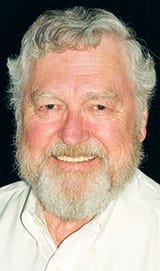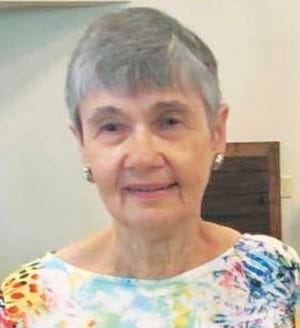Retired ORNL physicist has written a compelling memoir
D Ray Smith
Carolyn Krause brings us yet another insight into one of our own, Frank Plasil, a longtime Oak Ridge resident, distinguished physicist, and retired corporate fellow of Oak Ridge National Laboratory. Frank recently published a compelling book titled, “Kaleidoscope Facets: A Memoir of Darkness and Light.” Carolyn has read his memoir, which is available from Frank or from Amazon.com. Here is what she has to say about his memoir.
***
Frank Plasil has participated in world-class scientific experiments, interacted with Nobel Prize winners and traveled the world. An immigrant from Europe, he has lived a privileged life full of excitement, awe, wonder, love and joy. But he has also faced the disappointments, sorrows, fears, anger and frustrations that mark most people’s personal and professional lives.
In his memoir, he reveals how he has helped and hurt himself and others throughout his journey. His family life was marred by addiction issues and a tragic loss. He and his international colleagues fell short in their experimental quest to prove the existence of the theorized Big Bang “soup.” He repeatedly compares the positive and negative emotions he has felt during his life’s peaks and valleys with the changing patterns of light and dark colors reflected by the pieces of colored glass and mirrors in a kaleidoscope as its tube is turned.
Frank was born in 1939 in Prague, the capital of Czechoslovakia, the same year that Adolf Hitler’s German troops invaded the country and occupied it until 1945, the year World War II ended.
Frank recalls being “yanked out of bed” numerous times during his early childhood. Whenever a “wailing siren” announced an air raid, he remembers being “taken hurriedly in near-darkness, down the long zigzag of concrete stairs, to a damp basement room where we huddled by candlelight with other inhabitants of the apartment building. Then we had waited for the all-clear siren listening to the ‘thud’ of bombs and hoping that they would not find us.”
For three years after the war, life in Prague was peaceful. Then the Russian Communists took over the city and country. In 1948 before Frank turned 9, he and his two younger brothers were yanked out of bed in the middle of the night and rushed to the car given to their father, who was then head of a distillery. (Frank’s paternal grandfather was the “venerated boss” of the world-famous Pilsner Brewery in Budweis, Czechoslovakia.) Because Frank’s father was a prominent member of the Social Democratic party, which opposed the Communists, he had to escape to avoid prison.
So, Frank’s father drove his wife and three sons on a no-return trip, stopping only briefly to visit his sister in Bratislava. Thanks to arrangements made by his father’s political contacts, the family reached a Czech island on the Danube River by inflatable rubber boat, got into an official Austrian government car that took them to Russian-occupied Vienna, and obtained forged passports that allowed them to reach the American zone and find safety in the German-speaking part of Switzerland.
Two years later, the family moved to London, England, where they befriended fellow Czech refugees and where Frank and his brothers were bullied by their classmates and called “bloody foreigners.”
Frank was 12 when the family moved to Geneva, Switzerland, where he received an excellent high school education at the International School of Geneva (Ecolint). There his father, who had a Ph.D. in economics, took a position with the United Nations. Frank received a B.Sc. degree in chemistry from the Queen Mary College of the University of London. (He did miss one term while recovering from an accident in Geneva in which both his ankles were crushed.) Then he emigrated to the United States in September 1960 from his “true hometown of Geneva,” which he described in some detail.
Frank had accepted a teaching assistantship from the chemistry department of the University of California at Berkeley. At that time Glenn Seaborg, the discoverer of plutonium, was the university chancellor. Frank’s advisor was “Stan Thompson, who did nearly all the actual work that led to Seaborg’s Nobel Prize,” Frank wrote. But he added that Seaborg convinced him to change his professional field from chemistry to physics.
At Berkeley, his research involved using an accelerator to collide heavy ions of oxygen and carbon with light elements, including gold, to induce fission. During this time, he was surprised to witness “personal hostility between respected and well-recognized scientists.” He was pleased to meet Catherine Goldenberg, divorced mother of a four-year-old boy and an employee at Berkeley. Despite his parents’ objections, Frank married Cathy in 1964 and adopted her son.
They moved to Long Island, where Frank worked for two years as a postdoctoral researcher at Brookhaven National Laboratory (BNL), took up boating and water sports and became a naturalized US citizen. In 1966, Frank was hired by ORNL, and they moved to Oak Ridge, where he was surprised to learn that only one barbershop in town was “color-blind.” In 1971, the couple had a daughter named Maia. Frank won custody of her in 1979 when he and Cathy were divorced. Frank’s second wife, whom he married in 1980, is Carol, who had been divorced from Peter Dittner, an ORNL physicist.
Frank joined ORNL’s Physics Division in August 1967 and worked in the group led by Hal Schmitt. In 1978 he was promoted to group leader, and he was named section head in 1986. Thirteen years later, he was promoted to corporate fellow, the highest rung on the non-management career ladder. He performed many experiments on accelerators with collaborators at ORNL, Berkeley, BNL and the European Organization for Nuclear Research (CERN, near Geneva), one of the world’s largest international centers for scientific research.
During his career, Frank co-authored a “classic paper” on a physics discovery that was referenced more than 1,000 times; it’s titled “Equilibrium Configurations of Rotating Charged or Gravitating Liquid Masses with Surface Tension.” He is proud that he recruited to Oak Ridge the physicist Soren Sorensen, who became chair of the University of Tennessee’s physics department. His most enjoyable research venture was the WA80 experiment at CERN and the follow-up experiments at BNL.
The scientific goal of WA80 was “to re-create a state in which the entire universe may have existed a few instants after the Big Bang of creation: the quark-gluon plasma,” he wrote. Before atoms with nuclei made up of protons and neutrons were created, a “soup” of quarks and the massless “gluons” that hold them together to form protons and neutrons is believed to have been present.
Calculations indicated that particle beams in CERN and BNL accelerators could provide the extreme temperatures and pressures (sufficiently large energy density) required to break quarks loose from their confinement in protons and neutrons. But the experimenters failed to find the needed evidence. Frank wrote that at the time of his retirement in 2002, “the quark-gluon plasma had not been detected in the laboratory.”
Frank’s book includes three chapters and two appendices on Pakistan, which he visited several times to conduct nuclear research in 1971. At the time of his two-month assignment at the Pakistan Institute of Science and Technology under the auspices of the Agency for International Development, “The official position was that Pakistan’s nuclear program was only pursuing peaceful applications of atomic energy,” he wrote, adding that his research stint contributed to the breakup of his first marriage.
In one appendix he explained that in the same decade, Pakistan began making fuel for an atomic bomb. But Frank makes clear that Canada provided the reactor for producing weapons-grade plutonium around 1973 and a year later, the German-trained Pakistani metallurgist AQ Khan returned to his country with his gas centrifuge expertise and headed a uranium enrichment plant. In 1998, Pakistan began testing its new nuclear weapons.
Frank’s memoir offers fascinating stories from his life in both our country and in Europe and Asia. It benefits from the editorial suggestions of Linda Best, who teaches a course on memoir writing that Frank took at the Oak Ridge Institute for Continued Learning. I only wish he had included a photo of the domed Taj Mahal (completed in 1649 in India by an emperor in memory of his favorite wife), which Frank said he had visited three times!
***
Thank you Carolyn for yet another great story of one of our amazing Oak Ridgers.






Comments are closed.